| |
|
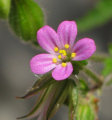 | |
| MaltaWildPlants.com by Stephen Mifsud |

|
| |
|
|
 |  |  |  |
| External Links: |
|
Anacamptis pyramidalis (Pyramidal Orchid) |
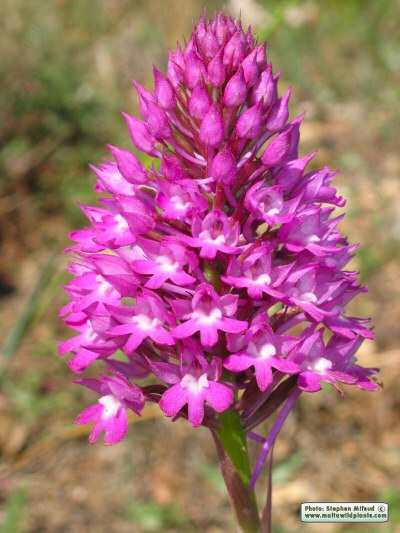
Anacamptis pyramidalis (ORCHIDACEAE.)
Images for this profile are taken from the Maltese Islands after year 2000. |
|
| Nomenclature |
Species name : | Anacamptis pyramidalis (L.) Rich | Authority : | Carl von Linne, Sweden, (1707 - 1778) ;
Louis Claude Marie Richard, France, (1754 - 1821) | Synonyms :
(basionym or principal syn.) |
|
Plant Family : | | English name(s) : | Pyramidal Orchid | Maltese name(s) : | Orkida piramidali | Status for Malta : | Indigenous. Present on the Maltese islands before man | Name Derivation : |
Anacamptis: "From the Greek ""anakamptein"" which means to curve or bend behind or backwards, referring to the backwards bent bracts located at the base of the labellum". (Greek origin ); 2 = From the Greek "anakamptein" which means to curve or bend behind: referring to the backwards bent bracts located at the base of the labellum. (Greek);.
pyramidalis: having a pyramidal shape, with reference to the arrangement of the flowers. (Latin origin ); 2 = Pyramidical shape - referring to the flower cluster (Latin).
| Remarks : | |
|
| Morphology and structure |
PLANT STRUCTURE: |
Character | Growth Form | Branching | Surface |
Description | | | |
General
Picture |  | 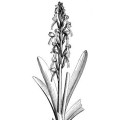 | 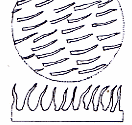 |
|
LEAVES: |
Character | Arrangement | Attachment | Venation |
Description | | | |
General
Picture |  | 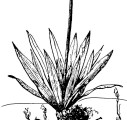 |  |
| |
Character | Leaf Shape | Leaf Margin | Remarks |
Description | | | |
General
Picture |  |  |  |
|
FLOWERS: |
Character | Colour | Basic Flower Type | No. of Petals | No. of Sepals |
Description | Purple (with a white center). | | 3 2 small and inconspicuous and 1 complex and colourful (labellum). | 3 Purple and quite similar to the 2 small petals of the flower. |
General
Picture | |  |  |  |
| |
Character | Inflorescence | Description | Ovary | Stamens |
Description | | The small flowers are bright purple with pale or white centres. They are made of 6 tepals (3 petals and 3 sepals) with the lowest petal being large and divided into 3 lobes. The flowers also have 2 small central white flaps and a long, thin tubular spur at the back and underside of the labellum. The stamens and stigma are joined in a central column. | | |
General
Picture |  |  | 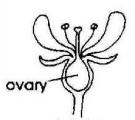 | 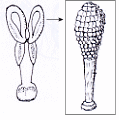 |
| |
Character | Scent | Average Flower Size | Pollen Colour | Other Notes |
Description | YES Vanilla / musk scent (later in the day the scent turns from sweet to a spicy one, which is described as foxy). | 12 x 10mm (Length x Breadth). | White | - |
|
SEEDS: |
Character | No. Per Fruit | Shape | Size | Colour |
Description | > 2,000 Despite the large amounts, propagation by seeds is not much viable for Orchids . | Powder form (very small to have a distinct shape ). | Extremely small (powder form). | Light Brown |
General
Picture |  |  |  |  |
|
FRUIT AND OTHER BOTANICAL DATA: |
Character | Fruit Type | Colour of Fruit | Subterranean Parts | Other Notes |
Description | | Green (turns light brown when ripe.). | | Germination and Growth The germination and growth of the plant is successful only with the presence of specific microrhizzial funghi in the soil. |
General
Picture |  |  | 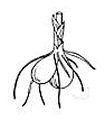 |  |
|
|
| Plant description and characters | |
Life Cycle: | Perennial. |
Growth Form: | GEOPHYTE (bearing underground bulbs, rhizomes, stolons, etc.) |
Habitat: | Calcareous garigue, steppe and disturbed rocky ground |
Frequency: | Frequent |
Localities in Malta: | Common in several garigues such as in Siggiewi, Rabat, Dingli, Bahrija, Mtahleb and Wied il-Ghasel (Mosta). |
Plant Height: | 20-50cm. |
| May-Jun |
Protection in Malta: | Protected by law: Schedule VIII of [S.L. 549.44] (Exploitation subject to management measures) |
Red List 1989: | Not listed in the Red Data Book of the Maltese Islands |
Poison: | |
This monocotyledonous plant grows once every year from a rather small tuber not deep down under the soil. Both the leaves and the single flowering stem arise from the tuber. The plant is entirely glabrous and is about 20 to 50cm in length.
The leaves are linear to lanceolate in shape and green to pale green in colour. They are wrapped around the stem and then the emerge and point outwards alternately. The leaves remain close to the stem and are neither branching nor numerous - about 4 to 10 living blades at a given time, sometimes even less.
The flowering stem produce numerous, purple flowers that are so closely packed together that the slender purple bracts and the apical flowering stem are not visible. The bottom flowers of the inflorescence bloom first and gradually blooming moves to the layer above. This forms a conical or pyramidal flower head, and hence the species name - "pyramidalis".
Every small flower is about 12mm in diameter and have a single, purple, slim and curved bract. The flower consists of 6 pink to purple tepals - 3 sepals and 3 petals. The lower petal, called the labellum is enlarged and divided into 3 identical lobes. The other 2 petals are smaller and have a hood shape. The sepals, found between the petals, are simpler but since they are also of same colour and size of the smaller petals it makes them quite indistinguishable from petals.
The flower also have 2 small erect white (or pale pink) flaps which serve to aid the pollinating insects to find the tiny aperture leading to the spur, where the nectar is supposed to be stored. The downpointing spur is thin (1-2 mm) and long up to 18mm. The stamens and stigma are joined together in a small, central column which appear as 2 dark spots by the naked eye.
The flowers vary in scent, being sweet and vanilla like in the morning and turns 'spicy' at the afternoon. Some describe the latter scent to be like the smell of goats.
When the flowers form fruit, they grow as small dehiscent capsules. The tiny seeds are difficult to germinate in the wild, and so the plant's preferred way of reproduction is by the formation of underground tubers.
|
|
| Information, uses and other details |
Nativity
This orchid is native to central and southern Europe [WWW-60] and in parts of the Mediterranean can be seen in large numbers [274].
Anacamptis genus
Anacamptis pyramidalis was the only species member of the genus. Not so long time ago almost half of all Orchis-species were send to Anacamptis. [WWW-61]
Edible Uses
Tuber - cooked [2, 4, 61]. It is a source of 'salep', a fine white to yellowish-white powder that is obtained by drying the tuber and grinding it into a powder [2, 105, 177]. Salep is a starch-like substance with a sweetish taste and a faint somewhat unpleasant smell [4]. It is said to be very nutritious and is made into a drink or can be added to cereals and used in making bread etc [5, 100, 183]. One ounce of salep is said to be enough to sustain a person for a day [100, 115].
Medicinal Uses
| Demulcent |
A medication (in the form of an oil or salve etc.) that soothes inflamed or injured skin. [WWW-32] |
| Nutritive |
Of or pertaining to nutrition; having the quality of nourishing; nutritious; nutrimental; alimental [WWW-32] |
Salep is very nutritive and demulcent [4]. It has been used as a diet of special value for children and convalescents, being boiled with water, flavoured and prepared in the same way as arrowroot [4]. Rich in mucilage, it forms a soothing and demulcent jelly that is used in the treatment of irritations of the gastro-intestinal canal [4]. One part of salep to fifty parts of water is sufficient to make a jelly [4]. The tuber, from which salep is prepared, should be harvested as the plant dies down after flowering and setting seed [4].
Salep
The drug known as Salep was used to be made from the dried tubers of several species of Orchis and related genera such as the Anacamptis pyramidalis.
Botanical Source and History of Salep: -
Formerly, the tubers derived from Eulophia campestris and E. herbacea, Lindley, and related species, growing in Persia and the Levant, constituted the drug salep. South and central Europe now furnish salep, and the only kinds admitted in the German Pharmacopoeia are those unbranched tubers derived from Orchis mascula, Orchis ustulata, Orchis Morio, Platanthera bifolia, Anacamptis pyramidalis and other related species.
The tubers are gathered, scalded, and dried quickly, which process removes their bitterness and disagreeable odour, as well as renders them somewhat translucent. The Oriental salep is less translucent than that from European dark in colour. Among other species, the Orchis masculata, Orchis latifolia, Orchis sambucina, and Gymnadaenia conopsea furnish the fattened, palmately-divided tubers, having 3 to 5 divisions. They resemble the commercial grades, excepting that they contain less mucilage. They were once called Radix Palmae Christi.
Description and Chemical Composition. - European salep is never so large as Oriental salep, which ranges from 1 to 1 3/5 inches in length, ovoid, oval, oblong, or pyriform, more or less flattened and corrugated, and marked at the apex with a terminal bud-scar. It is yellowish and translucent, hard, and horn-like, and without odour, but has a mucilaginous and somewhat insipid taste. In commerce it occurs mostly as a yellowish powder. The chief constituents of salep, according to Dragendorff (1865), are mucilage (48 per cent), starch (27 per cent), albuminous bodies (5 per cent), etc. The mucilage of salep is soluble in cold water, this solution being precipitated by alcohol, and by basic lead acetate.
Action, Medical Uses, and Dosage. - Salep is nutrient and demulcent. Administered in milk, water, broth, or jelly, it is useful in the summer diarrhoeas of infants and children, and in the chronic diarrhoea of adults, particularly that form associated with tuberculosis. A good mucilage may be prepared by macerating 40 grains of salep in some cold water, and subsequently adding boiling water until 8 fluid ounces of water have been used. The jelly may be prepared by rubbing 30 grains of salep with water until the powder has swollen fourfold, and gradually adding, with continual stirring, 8 fluid ounces of boiling water; boil until but 4 ounces remain. Like tapioca and similar products, it may be freely administered.
[WWW-18]
Cultivation Details
Requires a deep rich soil [1, 135]. Prefers a hot well-drained bank [42], growing well in a sunny dry border or on a scree [230].
Orchids are, in general, shallow-rooting plants of well-drained low-fertility soils. Their symbiotic relationship with a fungus in the soil allows them to obtain sufficient nutrients and be able to compete successfully with other plants. They are very sensitive to the addition of fertilisers or fungicides since these can harm the symbiotic fungus and thus kill the orchid [230].
Plants can be grown in lawns in calcareous soils, they should not be cut down until the leaves are dying down in the summer [230].
During the day the flowers have a pronounced aroma of vanilla in order to attract pollinating butterflies. In the evening, when damp with dew, the smell is more goat-like and this acts as a repellent to moths [245].
Propagation
Seed - surface sow, preferably as soon as it is ripe, in the greenhouse and do not allow the compost to dry out. The seed of this species is extremely simple, it has a minute embryo surrounded by a single layer of protective cells. It contains very little food reserves and depends upon a symbiotic relationship with a species of soil-dwelling fungus. The fungal hyphae invade the seed and enter the cells of the embryo. The orchid soon begins to digest the fungal tissue and this acts as a food supply for the plant until it is able to obtain nutrients from decaying material in the soil [200]. It is best to use some of the soil that is growing around established plants in order to introduce the fungus, or to sow the seed around a plant of the same species and allow the seedlings to grow on until they are large enough to move.
Division of the tubers as the flowers fade [230]. This species produces a new tuber towards the end of its growing season. If this is removed from the plant as its flowers are fading, the shock to the plant can stimulate new tubers to be formed. The tuber should be treated as being dormant, whilst the remaining plant should be encouraged to continue in growth in order to give it time to produce new tubers [230].
Division can also be carried out when the plant has a fully developed rosette of leaves but before it comes into flower [230]. The entire new growth is removed from the old tuber from which it has arisen and is potted up, the cut being made towards the bottom of the stem but leaving one or two roots still attached to the old tuber. This can often be done without digging up the plant. The old tuber should develop one or two new growths, whilst the new rosette should continue in growth and flower normally [230].
Other Notes
Scent: During the day the flowers have a pronounced aroma of vanilla in order to attract pollinating butterflies. In the evening, when damp with dew, the smell is more goat-like. [KF]
Spur: The spur, where the nectar should be present is long and thin and so it can be reached only by moths and butterflies who have a long proboscis. These are the main pollinators of this plant [273]
Guide Plates: At the centre of every flower there are 2 very small, white erect flap-like structures which serve as 'guide plates' to make it easier for butterflies and moths to find the tiny aperture of the spur leading to the nectar. [274]
Personal Observations
Closely related species
The species - Anacamptis urvilleana is an endemic plant to Malta and is very similar in appearance to the A. pyramidalis. A. urvilleana have the colour of its flowers lighter towards pink/lilac or even off-white rather than purple. Also, the flower head is not much pyramidal as A. pyramidalis. However the most important feature to distinguish the two is that A. urvilleana flowers in late Winter, approx at the end of February and is seen for 6 weeks or so, while A. pyramidalis appears later hence at early May up to the beginning of June and is also much more frequent. [SM]
Seeds
It is very difficult to obtain seeds of this plant, because either it does not produce any seeds and instead it reproduces asexually by formation of underground tubers, or the fruit and seeds are incospicuous and unobserved.
[SM]
|
|
| Links & Further literature
(3 papers) |

Google Web |

Google Images |

Google Scholar |

Research Gate |

Wikipedia |

JSTOR |

GBIF |

Med Checklist |

Cat. of Life |

EoL |

IPNI |

World Flora Online |

Plants of the World Online |

Vienna Virt. Herb. |

RBGE Herbarium |

KEW Herbarium |

MNHN |

Arkive |

IUCN |

CABI |
 |
Anacamptis pyramidalis senso lato in the Maltese Islands (from Orchids of the Maltese Islands book) |
Stephen Mifsud (2018) |
 |
Taxonomic notes on Anacamptis pyramidalis var. urvilleana (Orchidaceae), a good endemic orchid from Malta |
Stephen Mifsud (2018) |
 |
Assessment of Anacamptis pyramidalis for IUCN Redlist |
Stephen Mifsud (2017) |
Kindly Email if there are papers and publications about local
studies or information about this species to be included in the list above.
|
| Photo Gallery (31 Images) |  |
 |
 |
 |
IMAGE: ANCPY-01 Photo of flower spike in its habitat. |
IMAGE: ANCPY-02 Photo of flower spike in its characteristic pyramid shape, hence the species name "pyramidalis". |
IMAGE: ANCPY-03 Photo of flower in situ. |
IMAGE: ANCPY-04 Photo of small flower spike. Note the size (number of flowers per spike) and slight colour differences between flowers of different plants. |
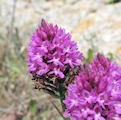 |
 |
| 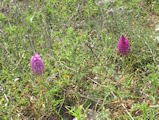 |
IMAGE: ANCPY-05 Photo of a typical flowering spike of the pyramidal orchid. |
IMAGE: ANCPY-06 Photo of another specimen with a characteristical pyramid-shaped inflorescence. However, this characteristic is variable and specimens with an almost conical inflorescences can also be found. |
IMAGE: ANCPY-07 - |
IMAGE: ANCPY-08 Photo showing 2 specimens, the normal purple-coloured form on the right, and an uncommon paler form on the left. The flowers of the endemic, Anacamptyis urvilleana are even paler. |
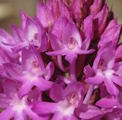 |
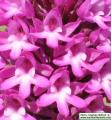 |
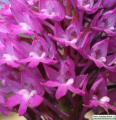 |
 |
IMAGE: ANCPY-09 Close up image showing the reproductive parts inside the flower. |
IMAGE: ANCPY-10 Close up photo of flowers having a paler white centres (pic 1). |
IMAGE: ANCPY-11 Close up photo of flowers (pic 2). |
IMAGE: ANCPY-12 Close up photo of flowers (pic 3). |
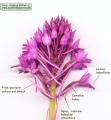 |
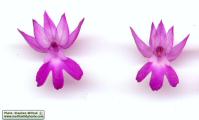 |
 |
 |
IMAGE: ANCPY-13 Scanned image of flower cluster with some flowers removed to show lateral view of flowers. Each flower has a slender. slightly curved purple bract, and a long, narrow pink purple spur. |
IMAGE: ANCPY-14 Scanned image of 2 flowers, with 3 sepals and 3 petals, the lower one, which is called the labellum, is larger, lobed and more prominent. The other 2 petals have a hood-shaped structure. The seoals are of the same colour of teh smaller petals. |
IMAGE: ANCPY-15 Scanned and enlarged image of a flower. Further detail reveals that the flowers have two small, central white or pale pink flap-like erect structures which are sometimes referred to as guide-plates. These help insects to locate the small aperture of the spur. |
IMAGE: ANCPY-16 Scanned and enlarged image of the labellum. It is larger, divided into 3 simple lobes and somehow have a more intense colour. |
 |
 |
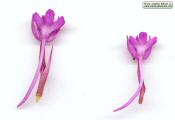 |
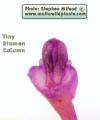 |
IMAGE: ANCPY-17 Lateral scanned image of a flower showing the slender, curved purple bract, and the long tubular spur. |
IMAGE: ANCPY-18 Scanned image of flower (front view) with labellum removed to show internal part of flower, chiefly the stamens+stigma column. |
IMAGE: ANCPY-19 Scanned image of flower (back view) showing well the long, narrow tubular spur which is about 15mm - 18mm long. Usually this contains some nectar and its shape suggest that the flower's preferred pollinating insects are butterflies and moths which have long proboscis. |
IMAGE: ANCPY-20 Scanned image of stamens + style column with the petals being removed. It is very small structure (about 2mm) and basically consists of 2 stamens and 2 stigma joined together in single, columnar structure. |
 |
 |
 |
 |
IMAGE: ANCPY-21 Scanned image of leaves and flowering stem. The leaves are wrapped around the stem at their base and point out at alternating directions. |
IMAGE: ANCPY-22 Scanned image of a single leaf blade. Leaves are more or less lanceolate and have parallel venation as most monocot plants. |
IMAGE: ANCPY-23 |
IMAGE: ANCPY-24 Photo of whole plant in situ, consisting of a thick flowering stem with adjecent leaves wrapped around it at their base. |
 |
 |
 |
 |
IMAGE: ANCPY-25 Photo of a young plant and its pyramidal-shaped flower head. |
IMAGE: ANCPY-26 Photo of 3 plants at close vicinity. It is unlikely that they grow from the same underground tuber. |
IMAGE: ANCPY-27 Photo of plant and its characteristic pyramidical inflorescence. |
IMAGE: ANCPY-28 Photo of 3 plants in their natural habitat - hence rocky wasteland with few soil. |
 |
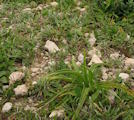 |
 |
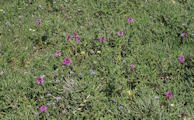 |
IMAGE: ANCPY-29 A clump of plants from Qala, Gozo. |
IMAGE: ANCPY-30 Photo of leaves of this Orchid taken on 30th March 2010. The Pyramidal Orchid flowers in May, and is the last from the Orchid species to flower (considering that the vegetative season for Malta is starts from October up to June.). |
IMAGE: ANCPY-31 Photo of a plant growing in the rocky valley side of Wied Hoxt. |
IMAGE: ANCPY-32 Photo of a group of plants in their natural habitat, usually low garigue and sometimes steppe. |
|
| | |

